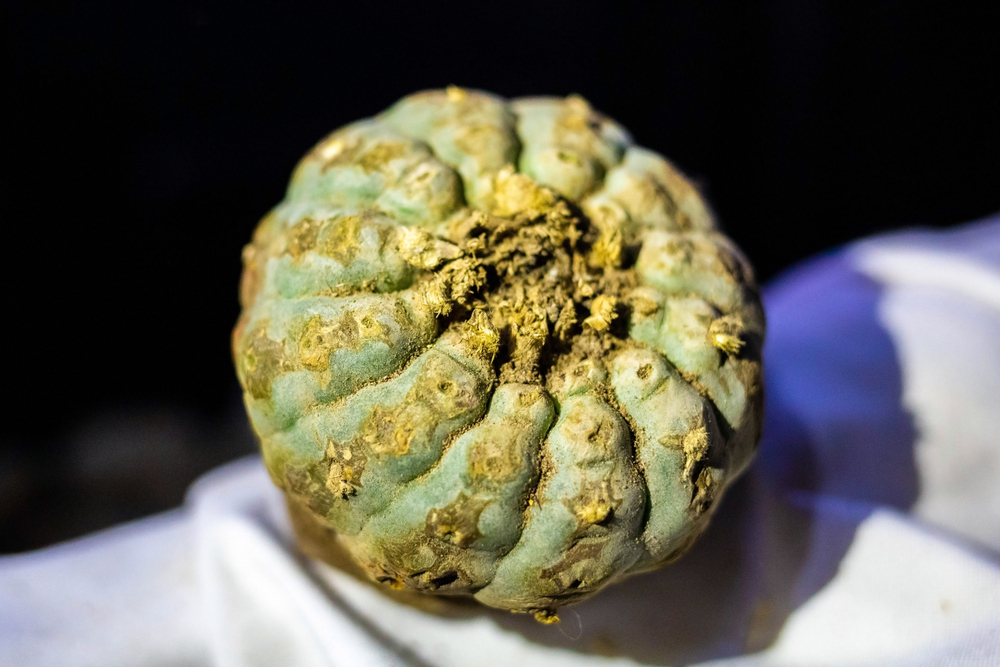Peyote vs. Ayahuasca: What Is the Difference?
Posted on Categories Discover Magazine

On an afternoon in May, 1953, author Aldous Huxley drank a glass of dissolved mescaline, the main psychoactive ingredient in the peyote cactus, and found his home rather transformed. At one point, he looked at a flower arrangement he had appreciated that morning in a clear-headed state for its colors.
“But that was no longer the point,” Huxley writes. “I was not looking now at an unusual flower arrangement. I was seeing what Adam had seen on the morning of his creation – the miracle, moment by moment, of naked existence.”
What Is Peyote?
Huxley’s account of his experience, 1954’s The Doors of Perception, popularized psychedelic experimentation in general and the peyote cactus in particular.
Its bitter buttons, which cluster around a central flower, can be eaten raw or dried (crunchy like potato chips) or steeped to make tea. As a vestige of 1960s drug policy, peyote and mescaline remain Schedule I controlled substances, like heroin and LSD.
Effects of Peyote
Mescaline is known for its slow come-on and LSD-like effects, which can include visual, auditory and tactile hallucinations, loss of personal identity, distorted perception of time, and novelty enhancement. This is probably why Huxley so dramatically reconsidered his flower arrangement.
There are more onerous side effects of peyote thanks to its chemical structure, including nausea, vomiting, abdominal pain, sweating and increased heart rate. As such, its use has fallen so low that it accounted for just 116 out of 2.8 million cases reported to poison control in 2007.
Early Uses of Peyote
Early Americans started taking peyote, which grows in the American southwest and Mexico, as early as 3,780 B.C., according to one study. Their successors, members of the present-day Native American Church, still consume it today under a special exception for ceremonial use.
Tough to gather and cumbersome to traffic, peyote buttons fell out of favor as alternatives such as psilocybin mushrooms and LSD can be grown in home basements or synthesized in small labs, respectively.
Read More: Our Ancestors Got High, Too
What Is Ayahuasca?
Another traditional psychedelic, ayahuasca, has skyrocketed to prominence in recent years, thanks in part to the popularity of ayahuasca ceremonies modeled after traditional Amazonian ones.
It contains DMT, a chemical that, like mescaline, activates a certain group of serotonin receptors, which may enhance cognition at lower doses (see: microdosing). At high doses, they induce the profound hallucinogenic effects common to serotonergic psychedelics.
Ayahuasca Brew
Ayahuasca brew is made from boiled ayahuasca vines and chacruna leaves. It can be brewed in anything from a cauldron to a slow cooker, although the ingredients containing DMT can be hard to come by as the substance, like mescaline, is still on Schedule 1.
Seekers have turned to retreats in South America, where the practice dates back to at least 900 B.C. in Peru, or to new churches in the U.S. that use the brew as a sacrament and claim legal protection under a 2006 Supreme Court ruling.
Like other psychedelics, ayahuasca has emerged as a potential treatment for mental illness. A 2022 study followed 40 subjects who consumed the “medicine” and observed a sharp reduction in mental illness: While some 45 percent of the initial sample met the criteria for a mental disorder, ayahuasca seemed to have cut that group in half by the one month check-in.
Read More: Do Psychedelic Drug Therapies Actually Require Getting High?
Peyote vs. Ayahuasca
Thanks to the DMT it contains, ayahuasca is a more powerful hallucinogenic than peyote or LSD. It is capable of producing visionary experiences in which users “break through” into other planes of existence or communicate with beings such as elves or plant creatures that may carry spiritual significance for the user.
Like peyote, ayahuasca causes gastrointestinal irritation and vomiting, but the latter’s ability to then “make it worth it” has led to its popularity, and many drinkers believe the vomiting or diarrhea intensifies the experience to come.
Read More: Psychedelic Effects on the Brain